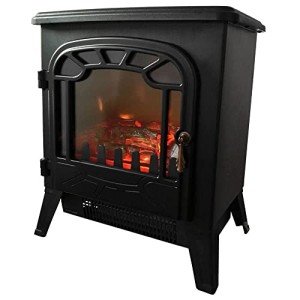The Most Effective Reasons For People To Succeed In The Buy Fireplace Industry
A Comprehensive Guide to Buying a Fireplace: Choosing the Right Fit for Your Home
Fireplaces have long been a central function in homes, providing heat, atmosphere, and a meeting place for families and friends. Whether you're developing a new home, refurbishing an existing area, or merely wanting to upgrade your existing setup, buying the right fireplace can make all the distinction. This guide aims to supply an extensive introduction of numerous fireplace options, considerations for setup, and pointers for upkeep.
Types of Fireplaces
When thinking about a brand-new fireplace, property buyers will discover a number of types to select from. Each type features its own distinct functions, advantages, and drawbacks. Below is a breakdown of common fireplace types:
Fireplace Type
Description
Pros
Cons
Wood-Burning
Traditional option utilizing logs for fuel.
Authentic experience, strong heat source.
Requires routine maintenance, fuel storage, and ventilation.
Gas
Uses natural gas or lp, usually with a vented or ventless alternative.
Easy to utilize, less upkeep than wood.
Needs a gas line, might lose some atmosphere.
Electric
Plug-and-play choices with no requirement for venting, supplying simulated flames.
No setup required, safe for houses.
Does not have the credibility of real flames.
Ethanol
Uses bio-ethanol fuel in a portable or set system.
Tidy burning, no venting needed.
More expensive fuel expenses, limited heat output.
Pellet
Burns compressed wood pellets for fuel, similar to wood-burning.
Eco-friendly, low emissions.
Requires electrical energy for operation, specific fuel needed.
Key Considerations When Buying a Fireplace
1. Room Size and Layout
The fireplace needs to be ideal for the size and design of the space. Electric Fireplaces UK that is too large might overwhelm the area, while one that is too small may not successfully heat the area.
2. Heating Needs
Consider how much heat you need for the area. An electric fireplace might be sufficient for a smaller sized room, while a wood-burning or gas fireplace is ideal for larger areas requiring considerable warmth.
3. Visual and Style
Fireplaces are available in a variety of styles, from contemporary to rustic. It's important to pick one that complements the general decoration of your home.
Popular Fireplace Styles:
- Modern sleek styles
- Traditional elaborate surfaces
- Rustic stone or brick
- Minimalist electric models
4. Fuel Source
Deciding on a fuel source is important for function as well as preference. House owners need to consider the schedule, cost, and benefit of the fuel they wish to utilize.
5. Setup Requirements
Understand the setup requirements, as some fireplaces, particularly wood-burning systems, require a chimney, while others may be more simple to set up. House owners may need to talk to specialists to make sure proper setup and compliance with local codes.
6. Budget
Fireplaces can range significantly in rate from budget-friendly electric models to high-end gas and wood-burning units. Aside from the preliminary purchase rate, think about setup expenses and ongoing fuel expenses.
Installation Process
Setting up a fireplace is a significant job that might need expert assistance. Here is an overview of the basic actions included:
Planning and Design
- Assess places and styles based upon style and heating requirements.
Obtain Necessary Permits
- Check local building regulations and get any necessary permits for installation.
Select a Professional Installer
- Think about hiring a licensed specialist for safety and compliance with codes.
Prepare the Installation Site
- Clear the area and established any needed products or assistance structures.
Follow Manufacturer Instructions
- Adhere to particular guidelines provided by the fireplace producer during setup.
Last Inspection
- After installation, ensure a final evaluation is carried out to confirm the system's safety and functionality.
Upkeep Tips for Your Fireplace
To make sure longevity and optimal performance of your fireplace, routine maintenance is crucial. Here are some tips to keep your fireplace in terrific shape:
Wood-Burning Fireplaces
- Tidy the chimney at least as soon as a year to prevent creosote accumulation.
- Usage experienced wood for less smoke and much better effectiveness.
- Examine the fireplace structure for cracks or deterioration.
Gas Fireplaces
- Inspect gas connections for leaks regularly.
- Tidy the glass and the burner for optimal efficiency.
- Set up yearly maintenance with a certified technician.
Electric Fireplaces
- Dust and tidy the unit frequently.
- Inspect connections and replace any faulty parts if required.
- Guarantee the unit is sparkling clean before usage each season.
Ethanol and Pellet Fireplaces
- Keep fuel sources saved safely and far from heat.
- Clean the burner and guarantee no obstructions happen.
Frequently asked questions
Q: What type of fireplace is most effective for heating?A: Gas fireplaces and
pellet ranges tend to have greater performances, transforming more energy to heat compared to wood-burning options.
Q: Can I install a fireplace in any room?A: While many rooms can accommodate a fireplace, ventilation, readily available area, and local regulations may affect expediency.
Q: Are electric fireplaces safe?A: Yes,
electric fireplaces are generally very safe, consist of no genuine flames, and frequently consist of functions that prevent overheating.
**Q: How do I pick the best size fireplace?A: Consider the square video footage of the space and seek advice from with suppliers about recommended BTU ratings for heating effectiveness. Buying a fireplace is a substantial
choice that can significantly improve your home. By considering the type of fireplace, your heating needs, installation requirements, and ongoing maintenance, homeowners can choose the perfect unit to meet their choices and boost their home for many years to come. Whether you lean toward a traditional wood-burning fireplace or a modern electric service, the best fireplace will provide warmth, convenience, and design that can be valued for generations.  **
**